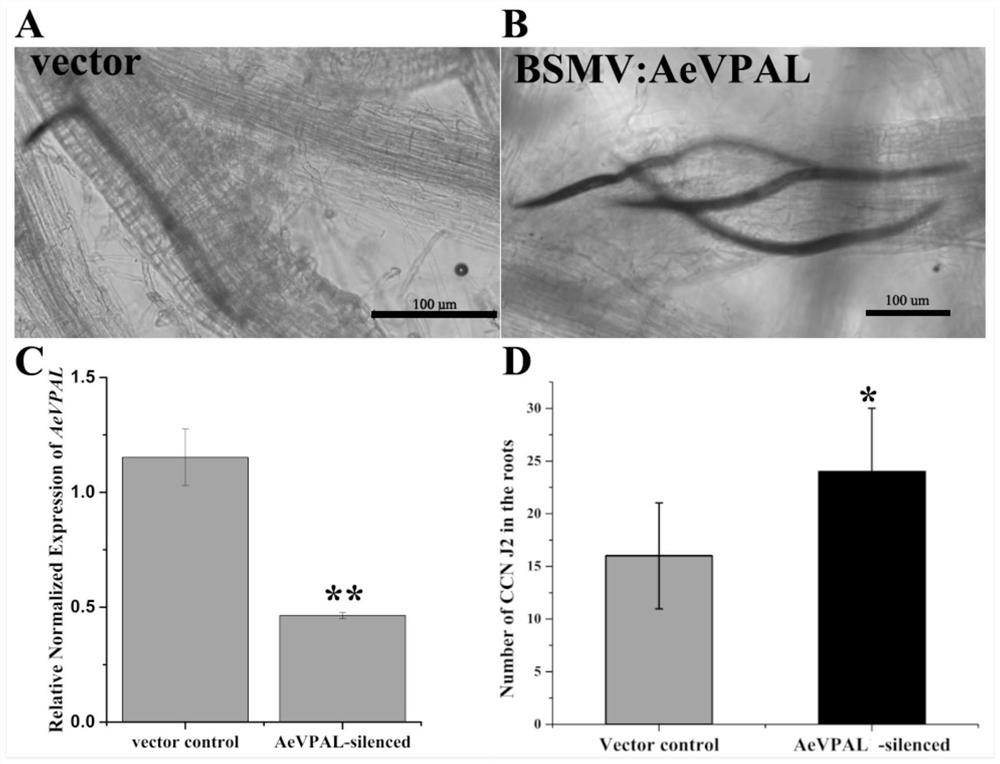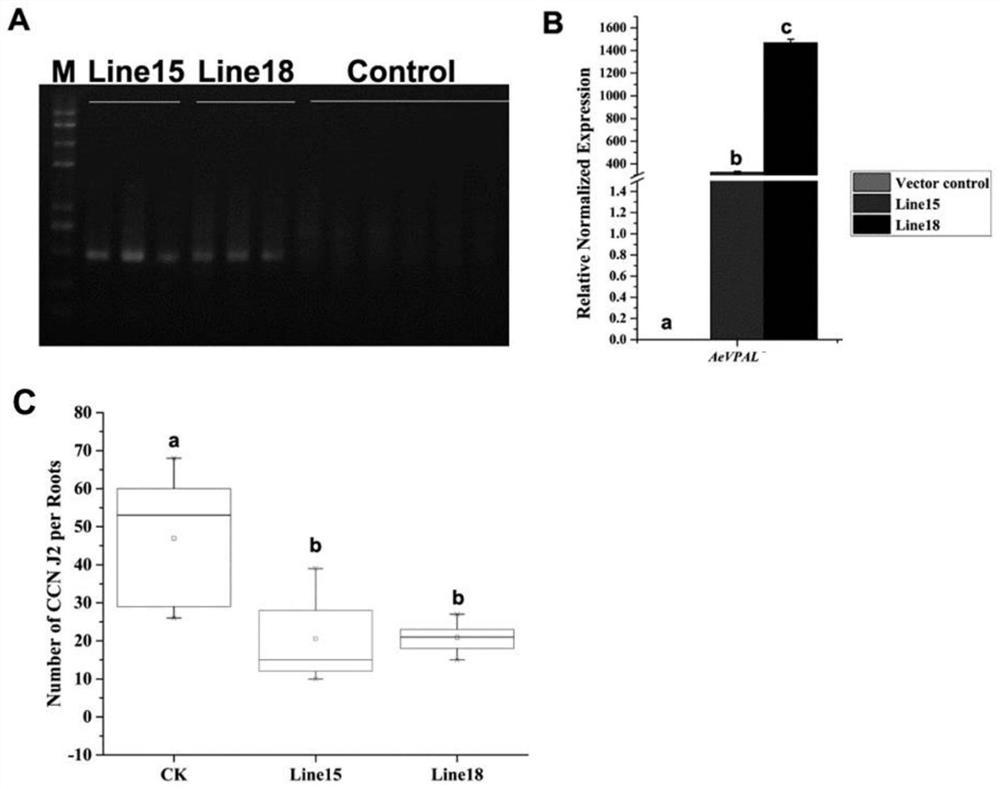A kind of volatile goat grass phenylalanine ammonia lyase gene and its application
A kind of grass phenylalanine ammonia lyase amino acid, grass phenylalanine ammonia lyase technology, applied in the field of volatile goat grass phenylalanine ammonia lyase nucleic acid sequence, can solve problems such as unreported PAL gene
- Summary
- Abstract
- Description
- Claims
- Application Information
AI Technical Summary
Problems solved by technology
Method used
Image
Examples
Embodiment 1
[0031] Amplification of the full-length coding sequence of PAL from Goatweed vulgaris and extraction and reverse transcription of total plant RNA:
[0032] (1) Soak the seeds of Goat grass No. 1 in water, put them in a refrigerator at 4°C for 2 days, then spread the seeds evenly on the filter paper that is continuously moist and place them in a petri dish with a diameter of 5cm, at room temperature of about 24°C and 16h Seedlings were germinated under a light cycle of / 8h.
[0033] (2) The roots of the seedlings 20 days after seeding were cut off, ground in liquid nitrogen, and total RNA was extracted according to the Trizol reagent protocol.
[0034] (3) Synthesize cDNA by reverse transcription according to the method of TOYOBO reverse transcription reagent
[0035] Amplification of the full-length coding sequence and silenced fragment of Goat grass PAL:
[0036] Using the reverse transcription product cDNA as a template, two pairs of different primers were used to amplify ...
Embodiment 2
[0045] AeVPAL VIGS vector construction and VIGS (virus-induced gene silencing) inoculation:
[0046] (1) BSMV-α, BSMV-β, BSMV-γ:GFP plasmids were placed in a -20°C refrigerator for later use.
[0047] (BSMV-α, BSMV-β, BSMV-γ:GFP plasmids are from the Institute of Genetics and Development, Chinese Academy of Sciences.)
[0048] (2) Enzyme digestion of target fragment and BSMV vector:
[0049] Restriction target fragment (silence fragment with restriction site): restriction restriction site is NheI point.
[0050]
[0051] Digestion of BSMV-γ:GFP plasmid:
[0052]
[0053] The operation steps are as follows: temperature is 37 °C, after 5 hours of enzyme digestion, the product is recovered by running gel. The recovery steps are the operation steps in the instructions of the agarose gel electrophoresis kit. Enzyme cleavage is single-enzyme cleavage, and the following is the same. Digestion cuts the plasmid and linearizes it for subsequent ligation.
[0054] The recover...
Embodiment 3
[0083] Construction of the PAL gene binary vector of volatile goat grass No. 1 and its genetic transformation to wheat:
[0084] (1) Construction of AeVPAL overexpression vector:
[0085] The full-length coding sequence of AeVPAL was ligated into pLGY02 vector through exchange reaction, and transformed into Agrobacterium EA105, and positive Agrobacterium was selected for subsequent transformation. The exchange reaction was performed with reference to the instructions of the EasyGeno Rapid Recombinant Cloning Kit from Tiangen Company. The pLGY02 vector was obtained from the Crop Research Institute of Shandong Academy of Agricultural Sciences.
[0086] (2) Genetically transformed wheat:
[0087] Preparation of Agrobacterium suspension: Shake the bacteria one day before the test, cultivate at 160r, 28°C; after the wheat ears are ready, start to prepare the Agrobacterium suspension; take 1ml of the bacteria solution in a 1.5ml centrifuge tube, add 1.4μL of acetosyringone (0.1M)...
PUM
 Login to View More
Login to View More Abstract
Description
Claims
Application Information
 Login to View More
Login to View More - R&D
- Intellectual Property
- Life Sciences
- Materials
- Tech Scout
- Unparalleled Data Quality
- Higher Quality Content
- 60% Fewer Hallucinations
Browse by: Latest US Patents, China's latest patents, Technical Efficacy Thesaurus, Application Domain, Technology Topic, Popular Technical Reports.
© 2025 PatSnap. All rights reserved.Legal|Privacy policy|Modern Slavery Act Transparency Statement|Sitemap|About US| Contact US: help@patsnap.com



